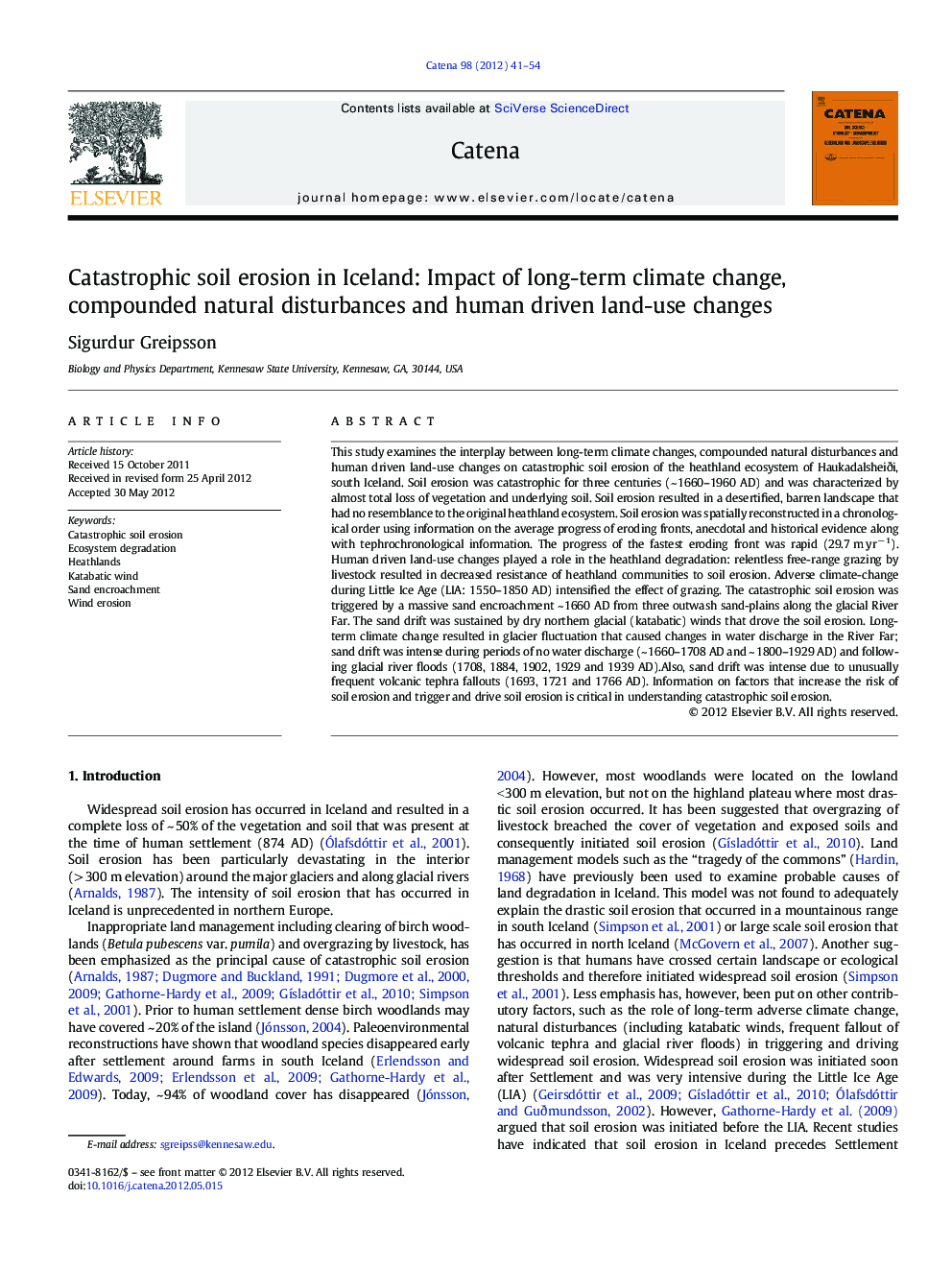| کد مقاله | کد نشریه | سال انتشار | مقاله انگلیسی | نسخه تمام متن |
|---|---|---|---|---|
| 4571842 | 1629254 | 2012 | 14 صفحه PDF | دانلود رایگان |

This study examines the interplay between long-term climate changes, compounded natural disturbances and human driven land-use changes on catastrophic soil erosion of the heathland ecosystem of Haukadalsheiði, south Iceland. Soil erosion was catastrophic for three centuries (~ 1660–1960 AD) and was characterized by almost total loss of vegetation and underlying soil. Soil erosion resulted in a desertified, barren landscape that had no resemblance to the original heathland ecosystem. Soil erosion was spatially reconstructed in a chronological order using information on the average progress of eroding fronts, anecdotal and historical evidence along with tephrochronological information. The progress of the fastest eroding front was rapid (29.7 m yr− 1). Human driven land‐use changes played a role in the heathland degradation: relentless free-range grazing by livestock resulted in decreased resistance of heathland communities to soil erosion. Adverse climate-change during Little Ice Age (LIA: 1550–1850 AD) intensified the effect of grazing. The catastrophic soil erosion was triggered by a massive sand encroachment ~ 1660 AD from three outwash sand-plains along the glacial River Far. The sand drift was sustained by dry northern glacial (katabatic) winds that drove the soil erosion. Long-term climate change resulted in glacier fluctuation that caused changes in water discharge in the River Far; sand drift was intense during periods of no water discharge (~ 1660–1708 AD and ~ 1800–1929 AD) and following glacial river floods (1708, 1884, 1902, 1929 and 1939 AD).Also, sand drift was intense due to unusually frequent volcanic tephra fallouts (1693, 1721 and 1766 AD). Information on factors that increase the risk of soil erosion and trigger and drive soil erosion is critical in understanding catastrophic soil erosion.
► The progress of soil erosion in Iceland was reconstructed chronologically.
► Soil erosion was rapid; the fastest eroding front moved on average 29.7 m yr− 1.
► Soil erosion was initiated by sand encroachment and sustained by katabatic winds.
► Frequent volcanic tephra fallouts and glacial river floods maintained soil erosion.
► Free-range grazing by livestock decreased resistance of vegetation to soil erosion.
Journal: CATENA - Volume 98, November 2012, Pages 41–54